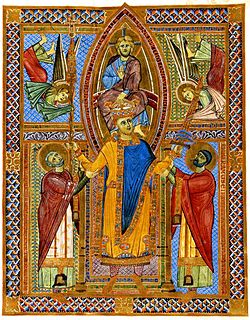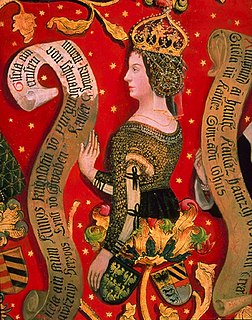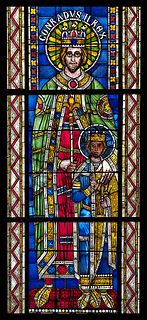| Ernest I, Duke of Swabia | |
|---|---|
| Duke of Swabia | |
| Reign | 1012-1015 |
| Predecessor | Otto I |
| Successor | Ernest II |
| Died | 31 March/May 1015 |
| Noble family | House of Babenberg |
| Spouse(s) | Gisela of Swabia |
| Issue | |
| Father | Leopold I |
| Mother | Richardis of Sualafeldgau |
Ernest I (died 31 March or 31 May 1015) was the Duke of Swabia (1012–1015). He was a younger son of Leopold I, the Babenberg Margrave of Austria. [1] His mother was called Richardis of Sualafeldgau.
The Dukes of Swabia were the rulers of the Duchy of Swabia during the Middle Ages. Swabia was one of the five stem duchies of the medieval German kingdom, and its dukes were thus among the most powerful magnates of Germany. The most notable family to rule Swabia was the Hohenstaufen family, who held it, with a brief interruption, from 1079 until 1268. For much of this period, the Hohenstaufen were also Holy Roman Emperors. With the death of Conradin, the last Hohenstaufen duke, the duchy itself disintegrated, although King Rudolf I attempted to revive it for his Habsburg family in the late-13th century.

Babenberg was a noble dynasty of Austrian margraves and dukes. Originally from Bamberg in the Duchy of Franconia, the Babenbergs ruled the Imperial Margraviate of Austria from its creation in 976 AD until its elevation to a duchy in 1156, and from then until the extinction of the line in 1246, whereafter they were succeeded by the House of Habsburg.

Richardis of Sualafeldgau was Margravine of Austria from 976 until 994 as consort of the first Babenberg margrave Leopold I.







